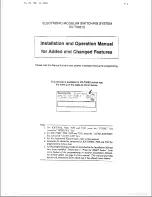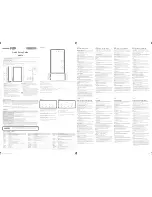
28
Firmly tighten the bolts with a 17 mm wrench. Preferably use a
ring spanner (rather than an open-ended wrench). If you should slip,
injuries or damage are less likely with one of these.
Once the screws are fully inserted and tightened, the bracket should
sit firmly in the wall. Should it still be moving in any way, you must tighten
it further.
Ensure that all wall brackets are screwed in firmly, to make
sure they will under no circumstance be teared out after the awning
has been installed.
Never try to secure the brackets in loose wall stones or any surface
that is not completely firm and even
.
Installation of the Awning
When all brackets are mounted properly you can fix the awning. To obtain the
required working height you need at least three ladders. Make sure these are
suitable for the work you are about to execute and that all feet are resting firmly
on the ground.
Now insert the awning into the brackets as shown in the drawing below. Then
immediately insert the safety screw and fix it with the locknut.
If the awning cannot be inserted into the wall bracket / if the locking plate
does not slide in easily, slightly loosen the screws on the bracket and try
again. You can also try to slightly move the awning back and forth until the
bearing tube slips into the bracket. Then immediately insert the safety
screw and fix it with the locknut. Use a 5 mm hexagonal spanner (CR-V)
to tighten the nut.
Attention! Do not forget to tighten the screws on the
brackets as well and ensure that they are secure!
Alternatively, the awning can also be installed under a concrete ceiling.
This procedure however is only to be executed by a qualified expert!
STEP 6
Locking Plate









































